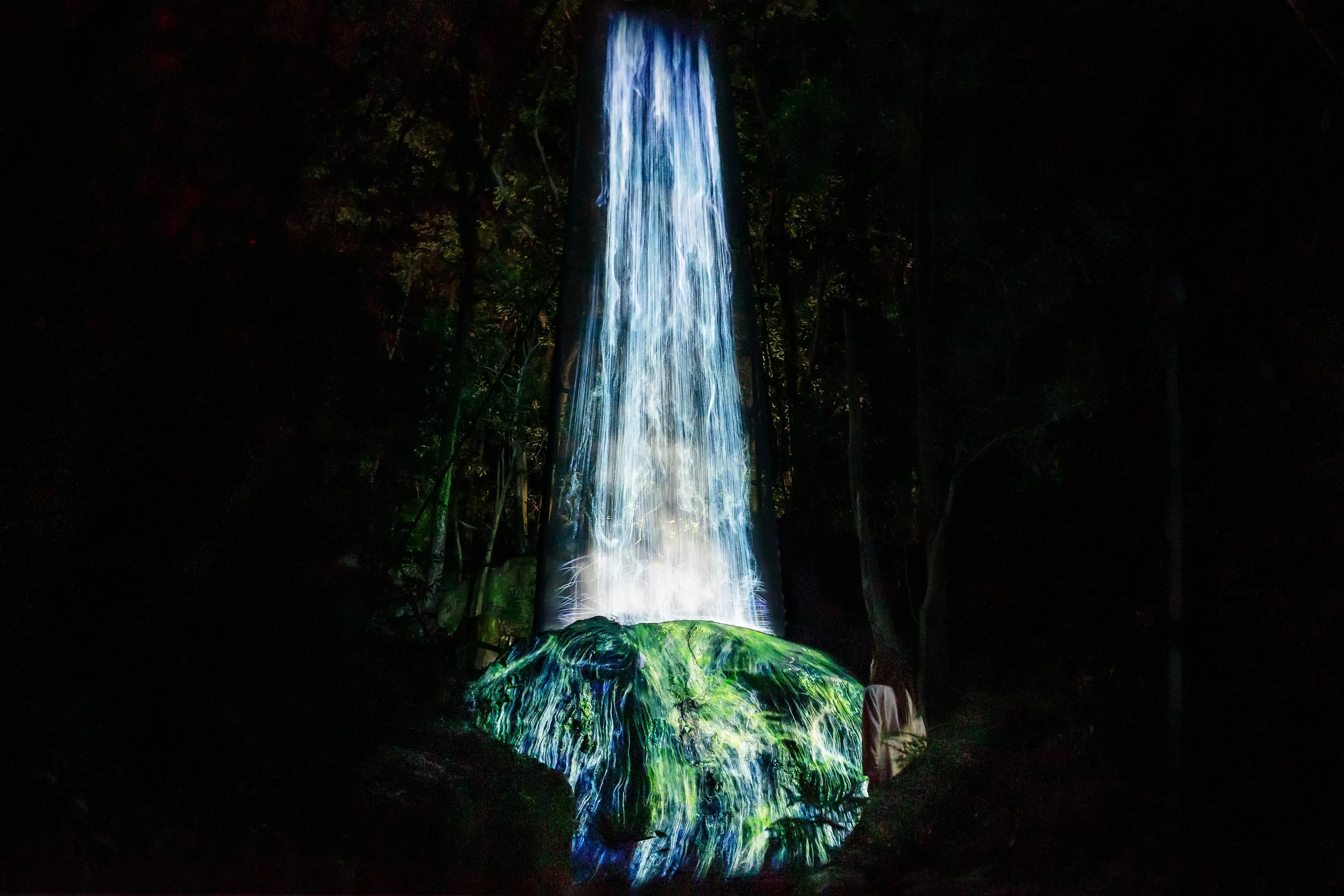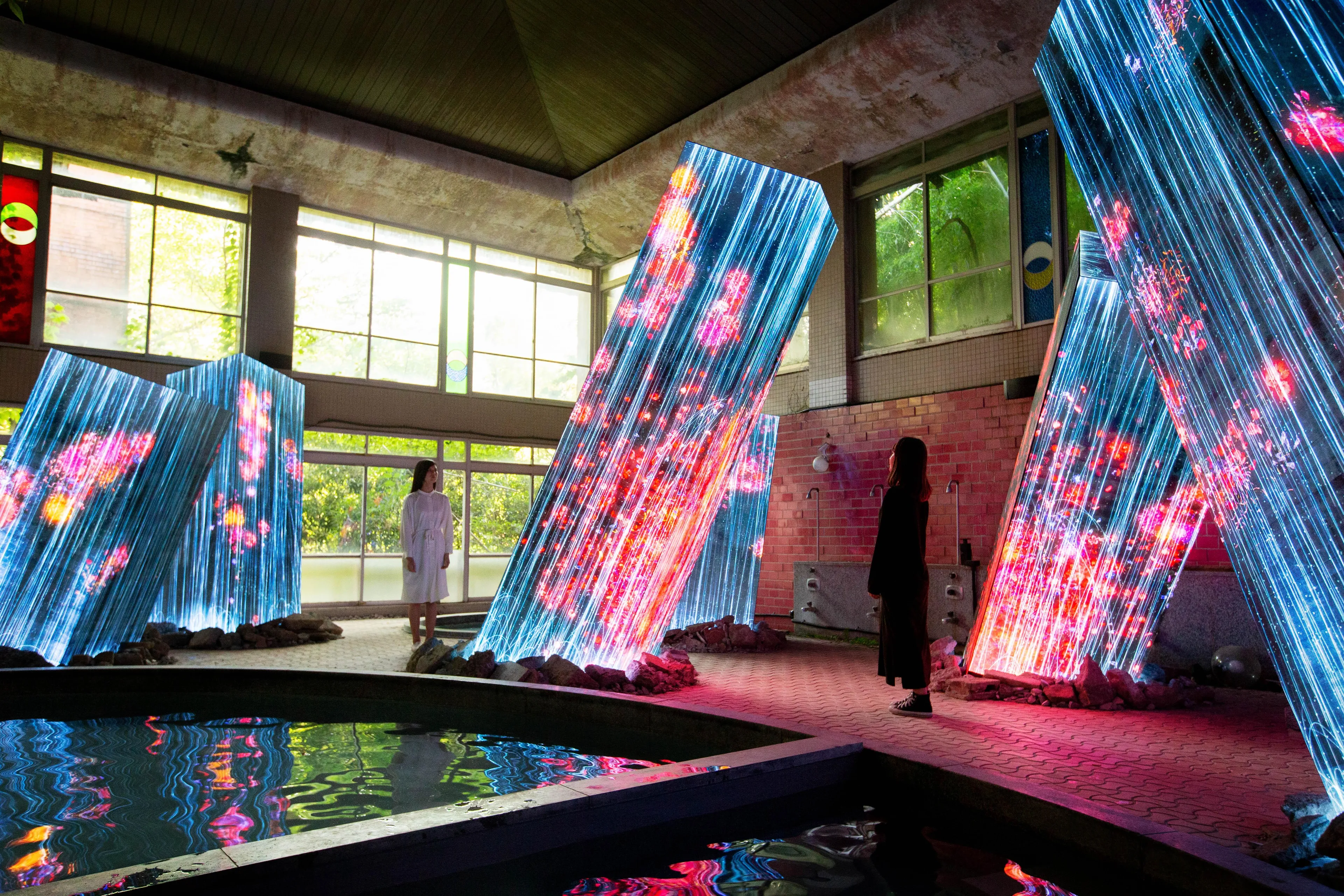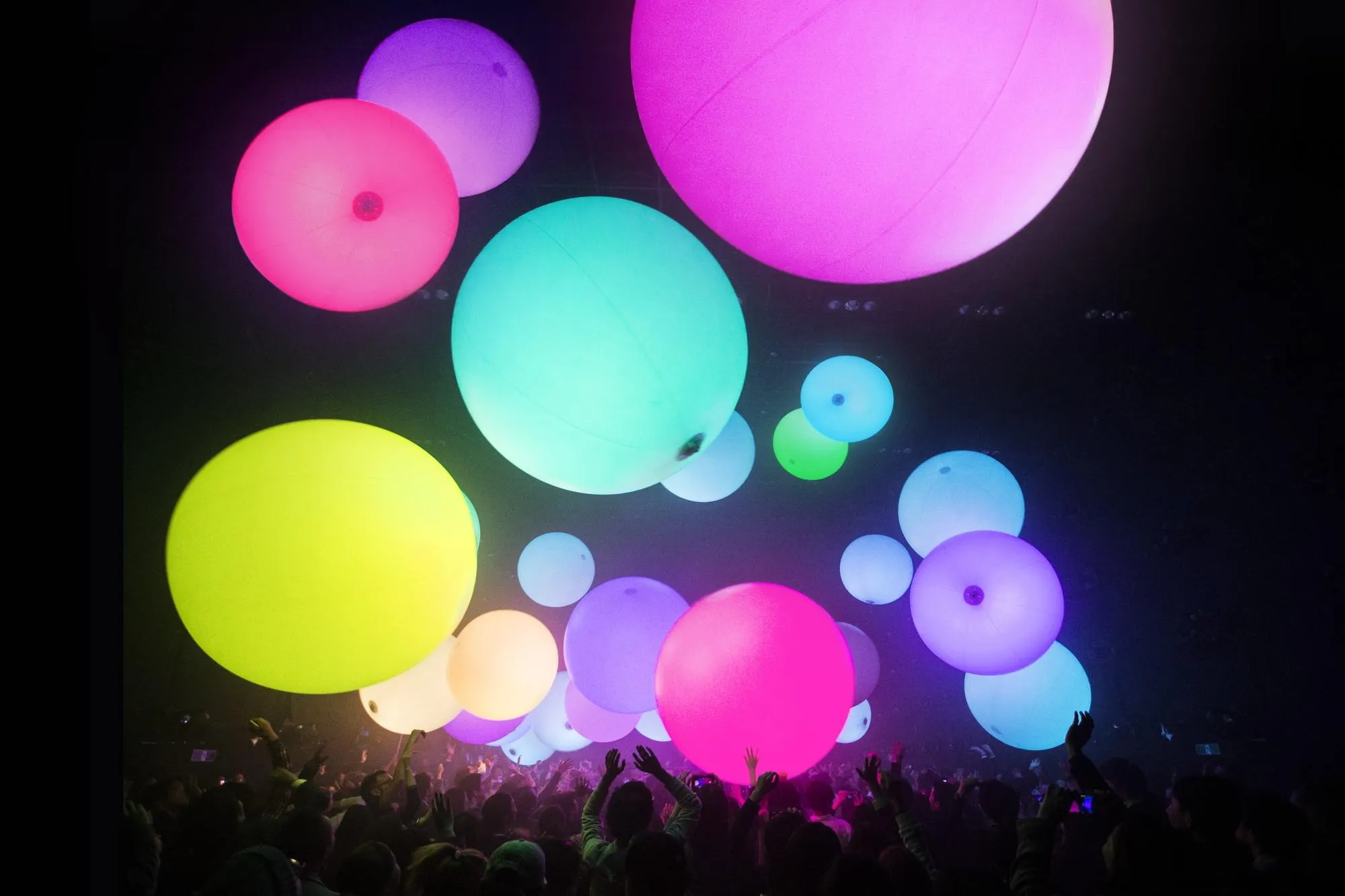
FEATURED WORKS
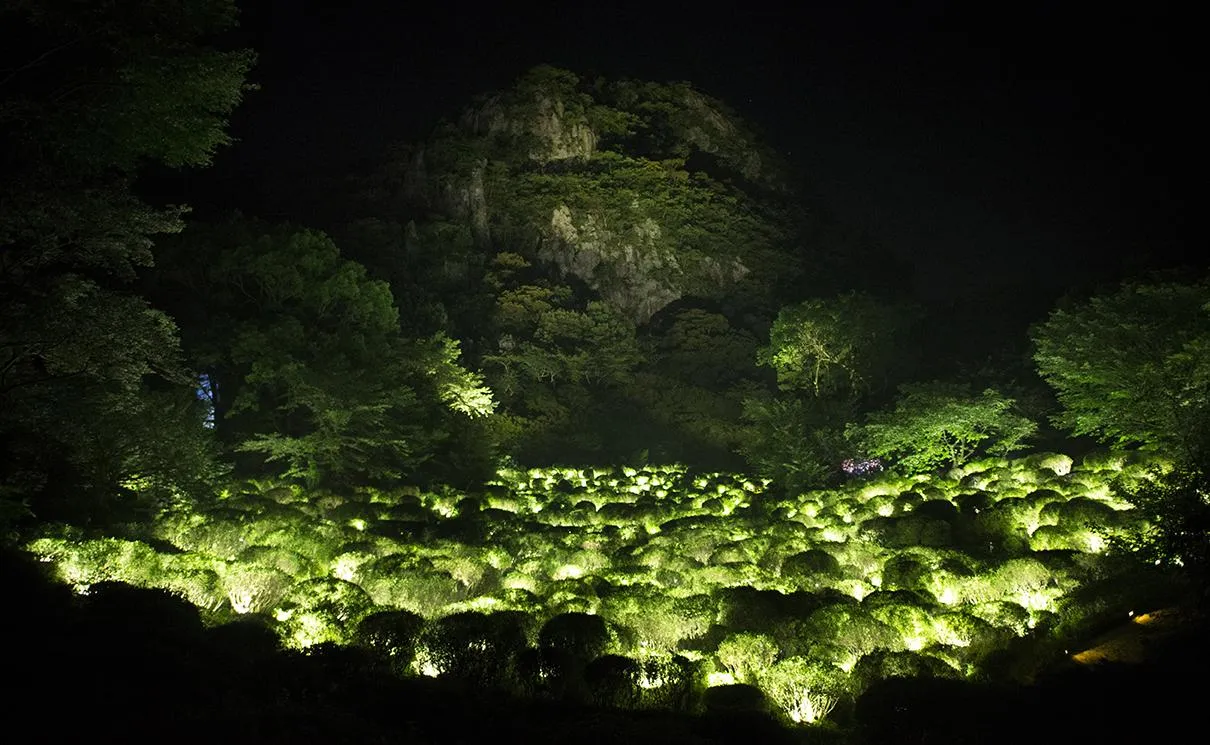
Life is Continuous Light - Azalea Valley
teamLab, 2017-, Interactive Installation, Sound: Hideaki Takahashi
The azaleas spread beneath the cliffs of Mt. Mifuneyama in the azalea valley shine brightly. Each azalea's sphere light is autonomous shining brightly and then fading, as if breathing slowly.
When people pass by or approach the azaleas, the color of the light changes and a new color resonates out. Then, the light of that tree radiates out and is transmitted to nearby azaleas in the valley. The propagated light of the azaleas will again resonate, and the color will continue to resonate to nearby azaleas in the valley.
These azaleas are said to have been created by Motozo Sakamoto of the Arima Clan azalea breeding in the late Edo Period during the Tenpo Era (1830 - 1843 C.E.). The azaleas were planted right at the opening of Mifuneyama Rakuen in 1845 C.E.
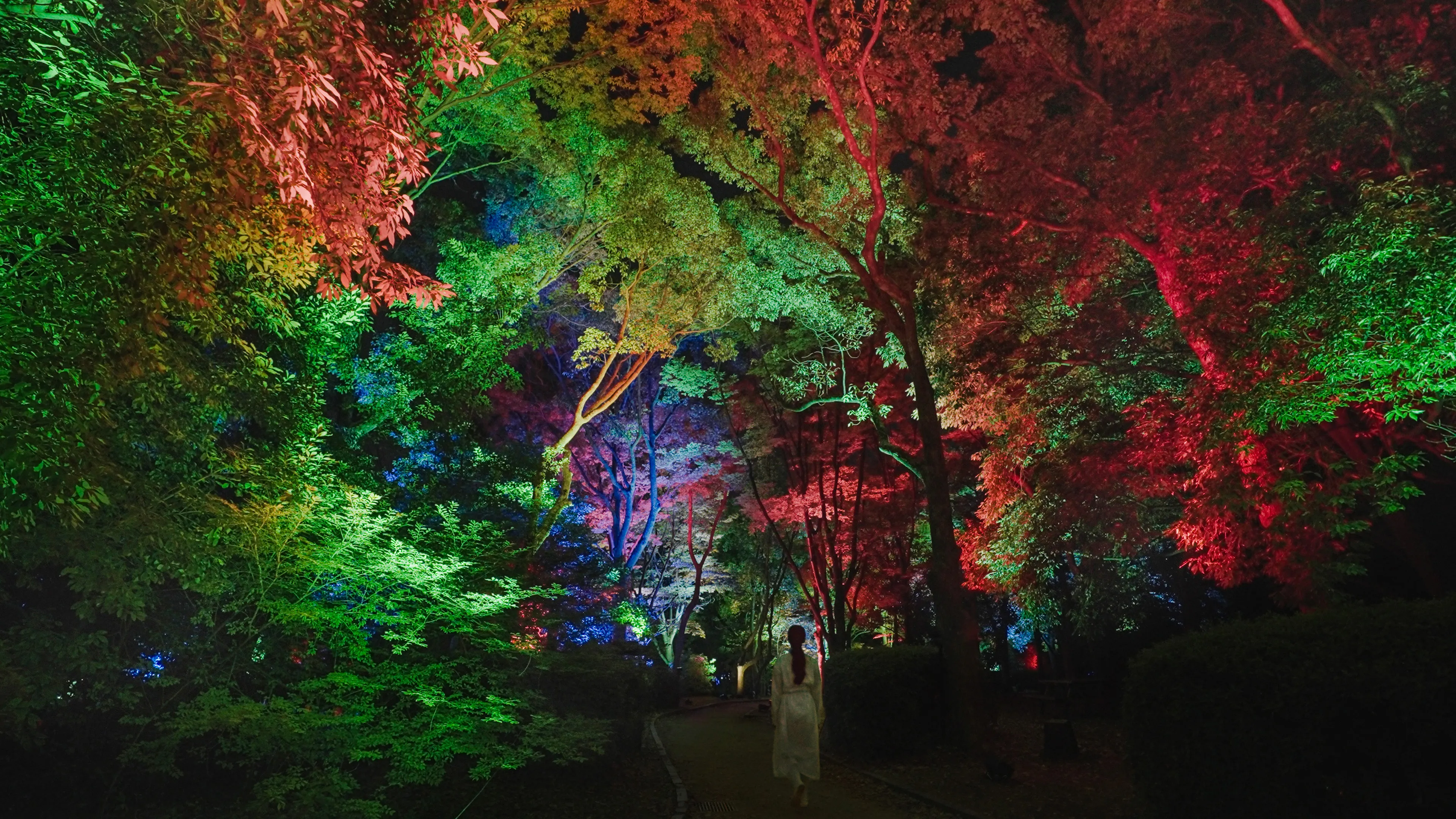
teamLab, 2014, Interactive Digitized Nature, Sound: Hideaki Takahashi
The trees shine brightly. The light of each tree is autonomous, blinking as if breathing slowly.
When people pass close to the trees, the light changes color, and a tone specific to that color resonates out. The light of the tree is transmitted to the surrounding trees one by one, continuously emitting the same tone.
If light approaches from the trees in the distance, it signifies the presence of people there, making people more aware of the existence of others in the same space.

Peace can be Realized Even without Order
teamLab, 2013-, from the series <span style="font-style: italic">Peace can be Realized Even without Order - Diorama</span>, 2012-, Interactive Installation, Endless, Sound: Hideaki Takahashi, Voices: Yutaka Fukuoka, Yumiko Tanaka
Each figure plays an instrument or dances. There is no one who influences the whole, or has an overall understanding of the whole, nor a conductor like in an orchestra. However, the figures are influenced by the rhythm of the sounds nearby. The figures influence each other, and through a synchronization phenomena, the rhythms of the nearby figures become closer to each other.
The synchronization phenomena is when different rhythms influence each other and become aligned. The pendulums of two pendulum clocks hanging on the wall gradually become aligned. When many fireflies gather on a tree, they gradually start to flash at the same time, creating a large light. The cells that make up the heart synchronize and vibrate at the same time, generating heartbeats. This can be seen in a variety of systems, including physical phenomena, neurophysiology, living systems, and ecosystems.
Dance can also be seen as a phenomenon of the body synchronizing with the environment. Since ancient times, dances performed at festivals after hunting or harvesting may have intentionally incorporated a state of body resonance that sought to integrate one's own existence with that of others, and increase the sustainability of the group through peaceful distribution.
To the viewer, the other people who overlap with the figures exist in the world of the artwork, and when seen by others as overlapping with the figures, the viewer also exists in the space of the artwork.
Multiple viewpoints are placed in the space of the world of the artwork, and the space of the artwork around the viewpoints is cut out and flattened using Ultrasubjective Space. When this flat surface is then placed in the exhibition space in the same position relative to the viewpoints, the world of the artwork is superimposed on the exhibition space. The viewer's viewpoint is not fixed; their viewpoint can move freely not only left and right but also in the depth direction, allowing them to explore a physical perception that immerses their entire body in the world of the artwork as they walk freely in all directions. When the viewer sees other people overlapping with the work through the screen, for them it is equivalent to that person being present not only in the exhibition space but also in the space of the artwork, and the other people become a part of the work.
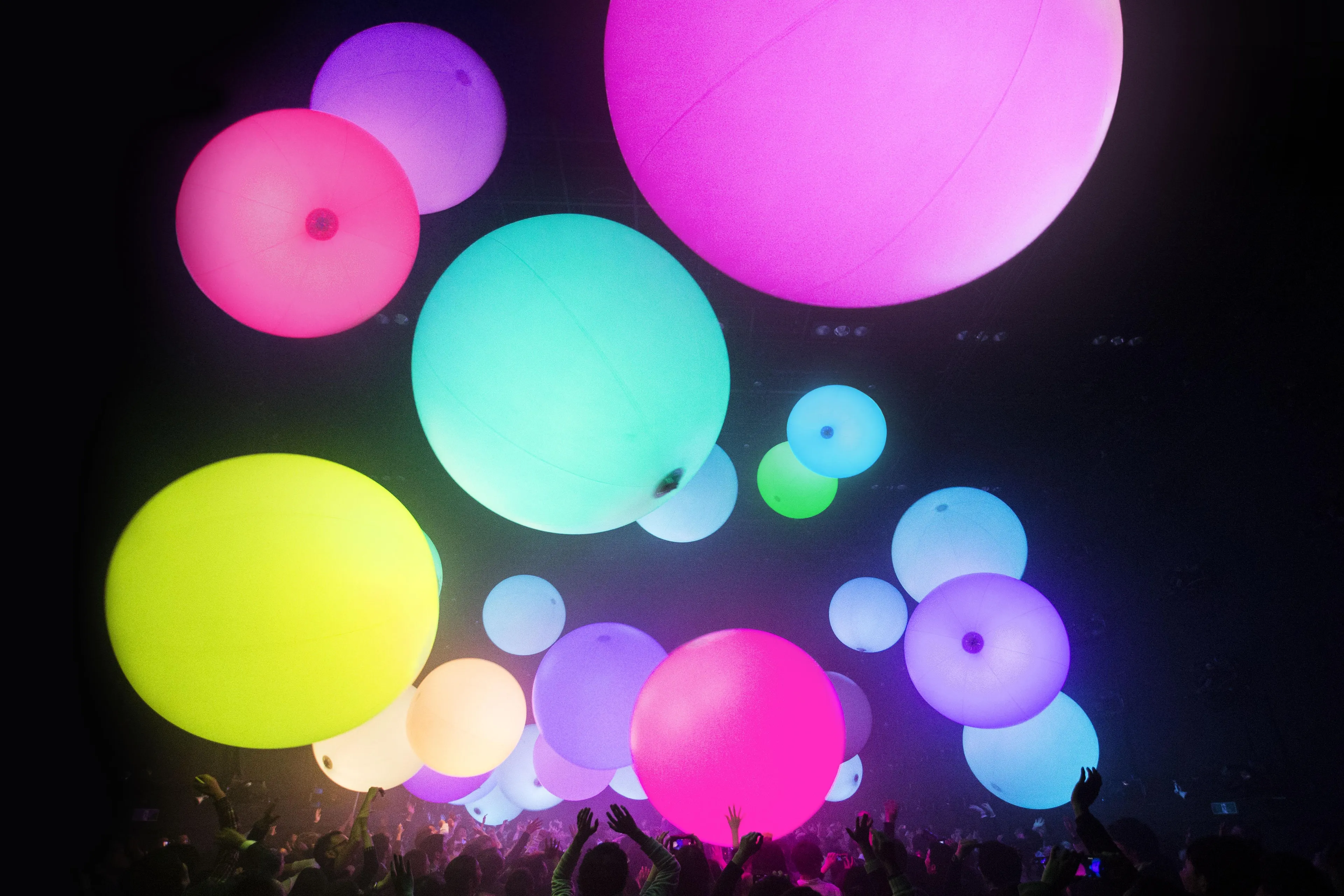
teamLab, 2009, Interactive Ball
When you touch the spheres, it causes effects such as a change in color, or the generation of a sound. Each sphere is synchronized by wireless P2P (Peer to Peer), so it is possible to change the colors of all of the spheres or to change the color of the lighting of the space. Furthermore, it is possible for directors/designers to change the colors remotely without touching the spheres. Anybody present can take part in the design of the space by tossing the floating spheres. The moment you toss the sphere, you take center stage and that moment is shared by everyone in the space.
Utilizing all teamLabBalls as a common interface allows the creation of a digital space where people can get immersed and feel emotionally involved.
※teamLabBall patent pending.
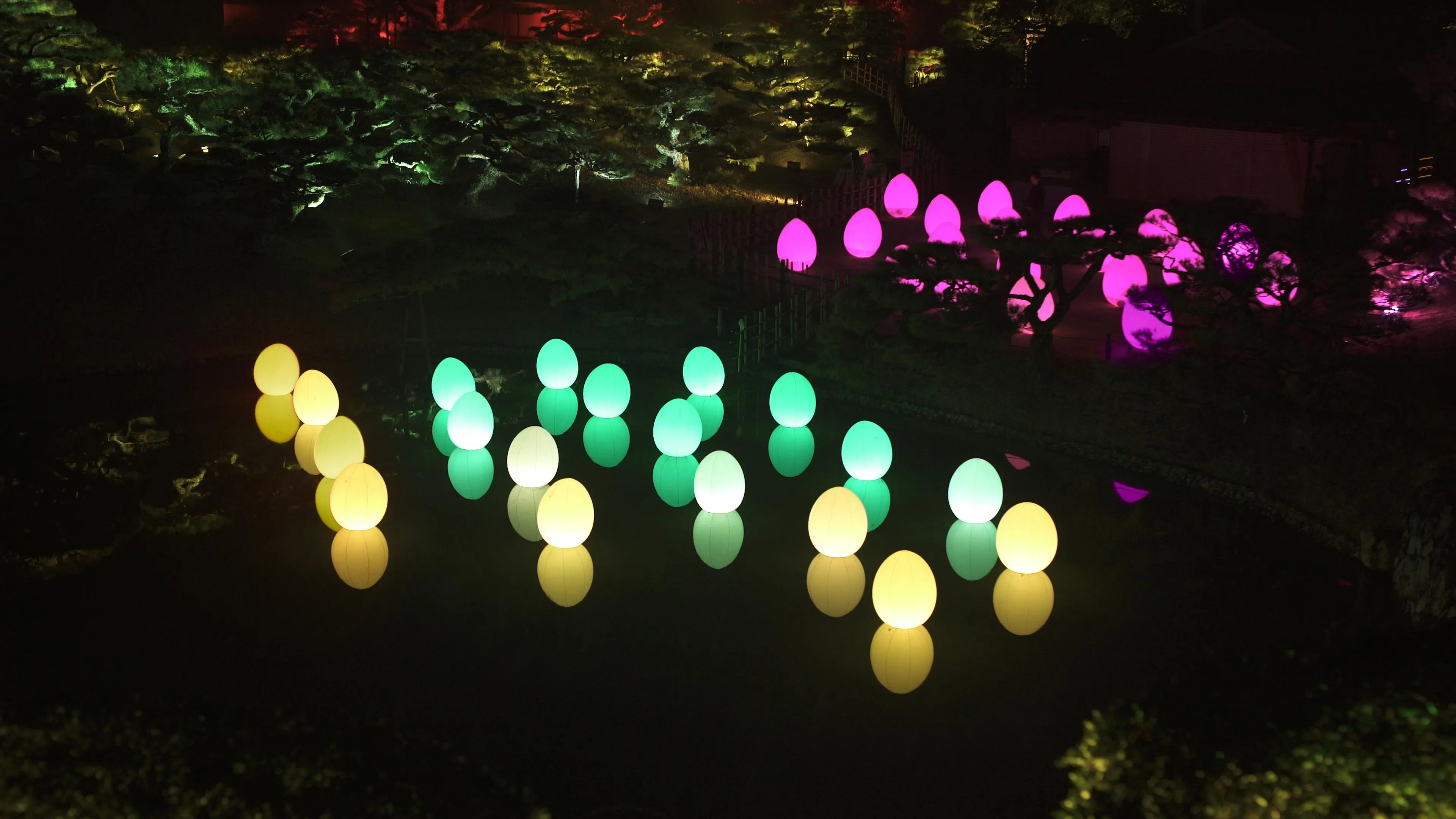
Autonomous Resonating Life on the Water
teamLab, 2019, Interactive Digital Installation, Endless, Sound: Hideaki Takahashi
The objects standing on the water are autonomous: they shine brightly and then fade as if slowly breathing.
When an object is pushed by people or is blown by the wind and tilts, the color of its light changes, and it emits a sound town specific to that color. The light resonates out radially to the objects nearby. The sound tone resonates out continuously in the same way as the light, spreading throughout the objects.
